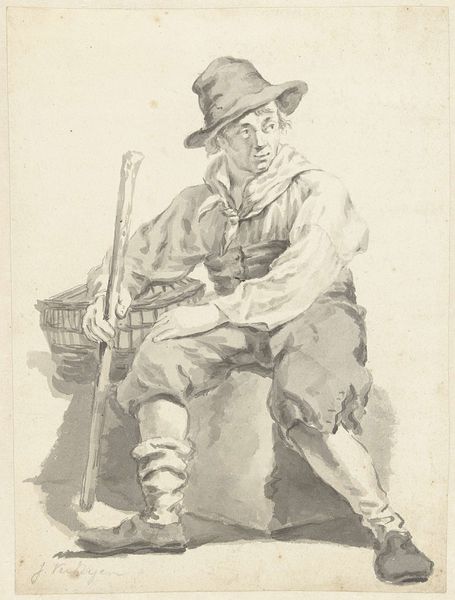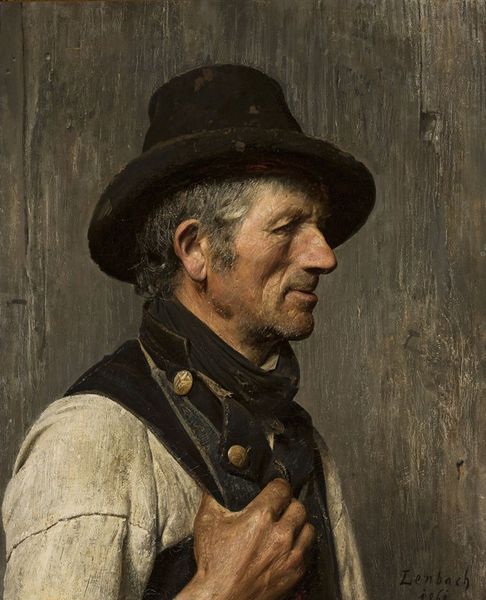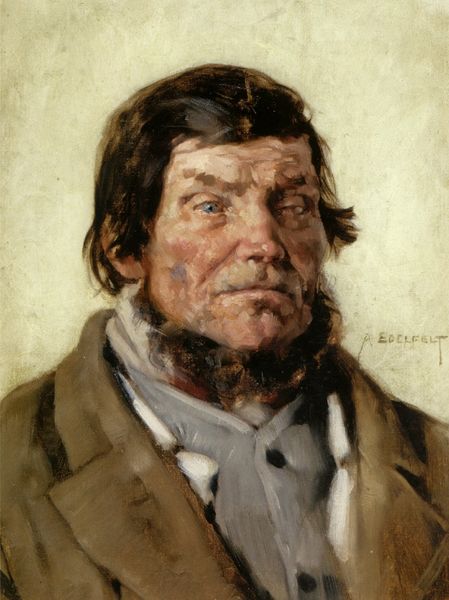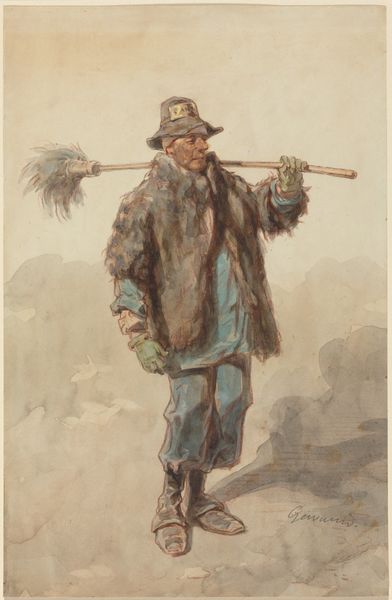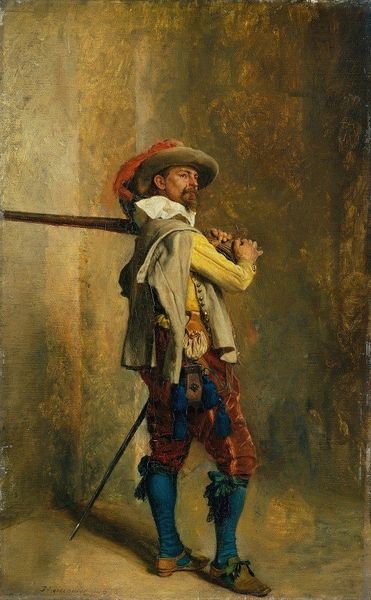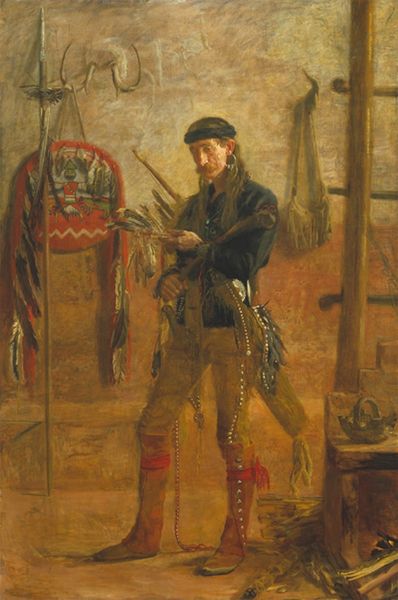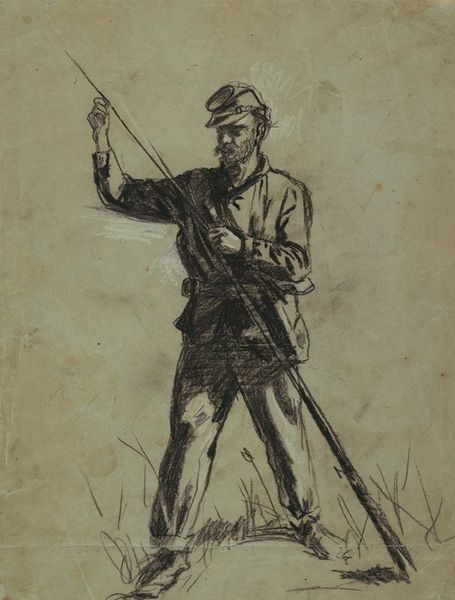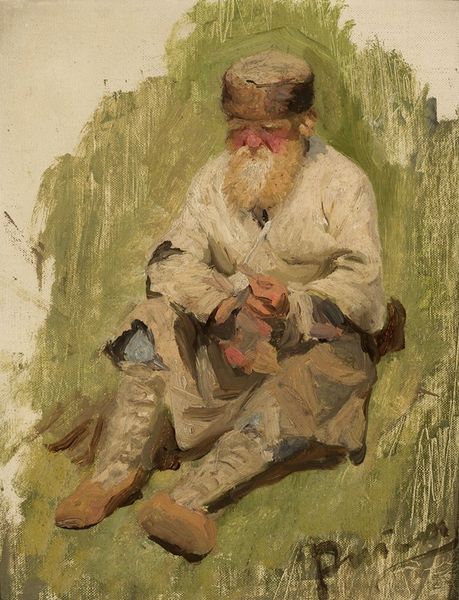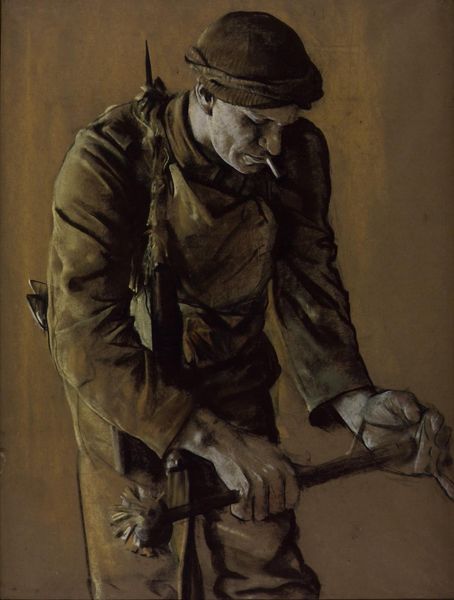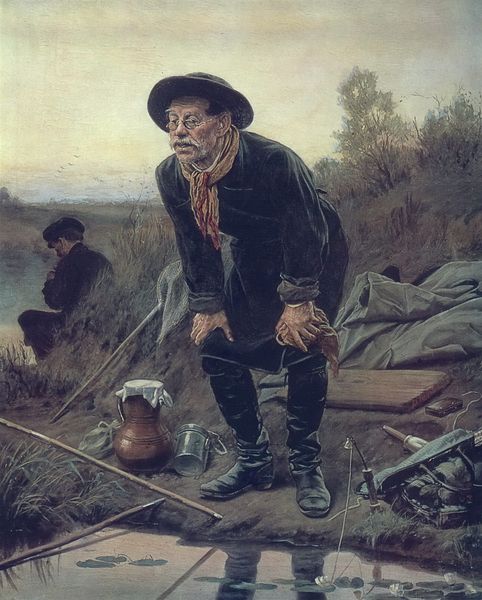
Copyright: Public Domain: Artvee
Curator: John George Brown’s “He Toils at Eighty,” completed in 1884, presents a compelling figure in oil paint. What's your initial response to this piece? Editor: A profound sense of weary determination. The figure's posture, the worn leather apron – it all suggests a lifetime of physical labor. It strikes a rather somber, yet respectful tone. Curator: It's tempting to see him merely as an emblem of resilience. But shouldn’t we also address the narrative John George Brown constructs? He was well known for these romanticized portrayals of working-class men, particularly immigrants. How does that context shift our interpretation? Editor: Exactly! His subjects become figures that resonate with debates concerning the value and dignity of manual work. But in terms of art reception and art politics of the time, his art becomes part of that same socio-economic discourse that's also actively oppressing marginalized communities. This painting's context in art markets then requires we critically examine it. Curator: The detail in his face is incredible; it speaks to the artist's academic training, a pursuit often inaccessible to the working classes. Yet, by placing a working-class man as a focal point in an artwork elevates a demographic traditionally found on the periphery. The work operates between appreciation and othering. Editor: He represents the archetype of a bygone era. What resonates for me is the power of realism to expose lived realities. This artist, consciously or unconsciously, captured a sentiment about a specific demographic and moment. This resonates profoundly because so much labor in history has gone unseen. Curator: Absolutely, it forces us to think about labor—about whose labor is valued and what kind is forgotten. Editor: Thinking of labor’s representations can also transform current views and approaches towards art history, helping dismantle its inherent institutional structures. Curator: Looking at art through a historical and theoretical lens provides a multilayered experience, I believe. It allows us to think critically about how artwork may serve as mirrors of past biases and serve as agents of modern conversation. Editor: Indeed, and seeing the broader effects artworks may inspire. Hopefully, a bit more than before.
Comments
No comments
Be the first to comment and join the conversation on the ultimate creative platform.
